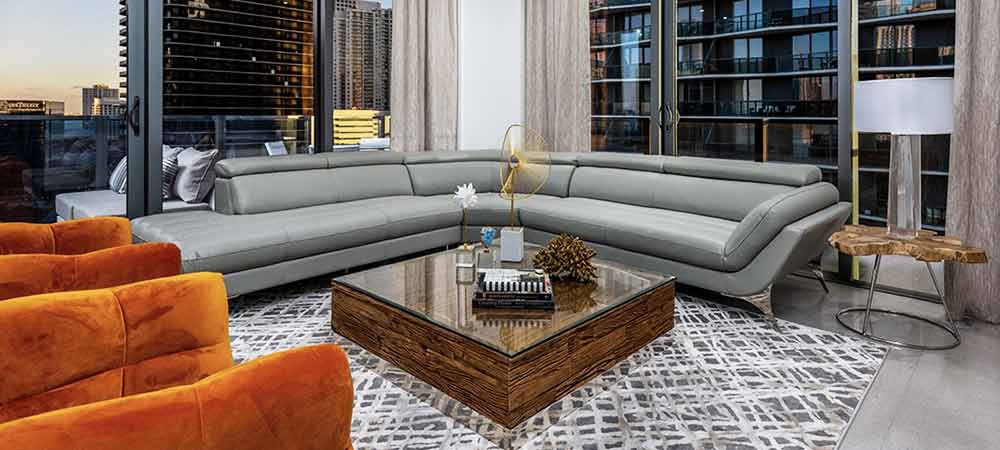|
A Guide To All The Types of Furniture Styles a-guide-to-all-types-of-furniture-styles 
A Guide To All The Types of Furniture StylesFurniture is not just a functional aspect of our living spaces; it's also a reflection of our style and the essence of the space we select to live in. The world of furniture design is vast and diverse, offering an array of styles that have evolved over centuries and across cultures. Whether you're decorating a new home, refurbishing your space, or simply curious about the history and aesthetics of furniture, this guide will take you on a journey through the fascinating world of various furniture styles. From the timeless classics of traditional furniture to the sleek lines of modern styles, like Queen Anne-style furniture and contemporary designs, each type carries its unique charm and character. Join us as we explore the rich tapestry of each type of furniture, offering insights into their origins, key characteristics, and the timeless appeal that continues to influence interior design today. Whether your taste leans towards the ornate, the minimalistic, the rustic, or the avant-garde, this guide will help you navigate the various furniture design styles with sophistication. Traditional Furniture StyleTraditional furniture style is a timeless and classic approach to interior design. Traditional furniture embodies elegance, craftsmanship, and sophistication. Intricate details, ornate carvings, and a sense of luxury characterize this style, rooted in historical European influences, particularly from the 17th to the 19th centuries. Standard features include gracefully curved lines, decorative motifs, and rich, dark wood finishes like mahogany, cherry, and walnut. Traditional furniture pieces often include wingback chairs, Queen Anne and Chippendale-style pieces, and formal dining sets with cabriole legs. Upholstery in traditional furniture tends to be plush and luxurious, often adorned with damask, brocade, or velvet fabrics in deep, regal colors. Traditional furniture creates an atmosphere of refinement and timelessness, making it a popular choice for formal living spaces and those who appreciate classic design aesthetics. Retro Furniture StyleRetro furniture style is a design movement that pays homage to the aesthetics of the mid-20th century, primarily the 1950s, 1960s, and 1970s. A playful, vibrant, and nostalgic approach to interior design characterizes this style. These furniture types often feature bold colors, unconventional shapes, and innovative materials like plastic, fiberglass, and chrome. The design elements are known for their whimsical and sometimes kitschy nature, incorporating shag carpets, pop art, and atomic-inspired patterns. Iconic retro furniture includes Eames lounge chairs, tulip tables, bean bags, and psychedelic-printed upholstery. Retro furniture is all about embracing the unique and expressive design sensibilities of the past, making it a perfect choice for those who appreciate a sense of nostalgia and want to infuse their living spaces with a fun and vibrant personality. Vintage Furniture StyleOf all the types of furniture styles, vintage furniture is well-cherished. This style refers to the use and appreciation of vintage furniture and decor that is typically at least 20 years old but less than 100 years old. This style draws inspiration from various design eras of the 20th century, including Mid-Century Modern, Art Deco, and more. Vintage furniture pieces often reflect their respective periods' design trends and craftsmanship. One of the defining features of vintage furniture is its authenticity and character. Vintage pieces showcase the wear and patina that come with age, adding a sense of history and uniqueness to a space. Everyday vintage furniture includes teak sideboards, Eames chairs, retro lighting fixtures, and Art Deco coffee tables. The vintage style allows for a mix-and-match approach, blending pieces from different decades to create a curated and eclectic interior. This style is trendy for those who appreciate the charm of older pieces and want to infuse their living spaces with nostalgia and individuality. Vintage furniture style can bring a touch of history and personality to contemporary homes, making it a timeless choice for interior design enthusiasts . Modern Furniture StyleModern furniture style, often referred to as "Mid-Century Modern," is characterized by its clean lines, simplicity, and a focus on functionality. This design movement emerged primarily in the mid-20th century, particularly from the 1930s to the 1960s, and it continues to influence interior design today. These days, you can easily find modern furniture online or locally. Key features of modern furniture style include sleek, uncluttered designs, minimal ornamentation, and an emphasis on form following function, e.g., a modern sofa sectional design. This style showcases materials such as wood, metal, and glass, and these pieces often showcase the natural beauty of these materials. Iconic modern furniture designers like Charles and Ray Eames, Ludwig Mies van der Rohe, and Eero Saarinen have significantly contributed to this style. Furniture pieces in the modern style often include items like the Eames Lounge Chair, Barcelona Chair, and the Noguchi Coffee Table. These pieces are known for their timeless appeal and celebrated innovative design concepts Modern furniture style is characterized by a harmonious blend of aesthetics and practicality, making it a popular choice for contemporary interiors. It values simplicity, functionality, and high-quality materials, creating a clean, uncluttered look that appeals to those who appreciate a minimalist and timeless design aesthetic Mid-Century Modern Furniture Style
Mid-Century Modern furniture style is a design movement that emerged in the mid-20th century, particularly during the 1940s, 1950s, and 1960s. It remains highly influential and is celebrated for its timeless appeal and iconic design elements.
Contemporary Furniture Style
The contemporary furniture style is a dynamic and ever-evolving design approach that reflects the current trends and sensibilities of the present moment. Unlike other furniture styles, contemporary furniture doesn't adhere to a specific period or design tradition. Instead, it draws inspiration from various sources, blending elements from different furniture styles, eras, and cultures to create a fresh and up-to-date look.
Transitional Furniture Style
Transitional furniture style is a balanced and versatile design approach that bridges the gap between traditional and contemporary aesthetics. This style combines traditional and modern design elements to create a harmonious and timeless look that appeals to various tastes.
Art Deco Furniture Style
Art Deco furniture style is a distinctive and glamorous design movement that emerged during the 1920s and 1930s. This style is known for its opulence, geometric patterns, and a sense of luxury that reflects the spirit of the Roaring Twenties. Art Deco design departs from traditional and ornate styles, favoring a modern and avant-garde approach.
Scandinavian Furniture Style
Scandinavian furniture style, often called "Scandi" or "Nordic" design, is a minimalist and functional design movement originating from the Scandinavian countries of Denmark, Sweden, Norway, Finland, and Iceland. It gained prominence in the mid-20th century and continues to influence interior design worldwide with its clean lines, simplicity, and focus on creating comfortable and inviting living spaces.
Rustic Furniture StyleRustic furniture style embodies a warm and inviting design approach that celebrates the natural beauty of raw and unrefined materials. Drawing inspiration from rural life and the great outdoors, it features natural elements like wood, stone, and metal, often left raw or weathered to showcase its authentic character. Earthy color palettes, weathered finishes, and a focus on comfort and coziness define this style. The rustic design invites a sense of authenticity and down-to-earth charm into living spaces, whether in a countryside cabin, farmhouse, or urban apartment. Victorian Furniture StyleVictorian furniture style harks back to the 19th century during the reign of Queen Victoria, characterized by ornate and elaborate designs. Furniture pieces in this style are known for their intricate details, rich woods like mahogany and walnut, and opulent upholstery featuring velvet and brocade fabrics. Curved forms, antique-inspired elements, and a love for decorative tapestries and fringes are hallmarks of Victorian design. It exudes a sense of grandeur and nostalgia, creating a luxurious and refined atmosphere in interior spaces, often associated with a sense of formality and sophistication. Minimalist Furniture StyleMinimalist furniture style is a design ethos that champions simplicity, functionality, and the elimination of excess. It features clean lines, uncluttered spaces, and a neutral color palette, emphasizing the beauty of simplicity. The minimalist design avoids excessive ornamentation, focusing on the functional aspect of furniture. Open spaces and quality materials like natural wood and steel contribute to the minimalist aesthetic. This style is ideal for those who appreciate clean, decluttered environments and find beauty in the serene simplicity of design. Industrial Furniture StyleIndustrial furniture style draws inspiration from industrial spaces, factories, and warehouses. It celebrates raw and practical design, featuring materials like exposed brick, concrete, steel, and reclaimed wood. Weathered and worn finishes, particularly in distressed wood and aged metal, evoke a sense of industrial history. Functional design is a crucial aspect, with pieces often serving multiple purposes. The industrial design brings an urban aesthetic and a sense of industrial nostalgia into modern living spaces, appealing to those who appreciate the beauty of the industrial aesthetic. ConclusionIn furniture design, diverse styles cater to varied tastes and preferences. From the rustic charm of raw materials to the opulence of Victorian grandeur, the simplicity of minimalism, and the urban allure of industrial design, each style offers a unique way to shape living spaces with personality and |











